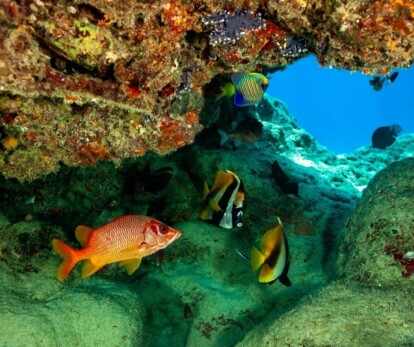Ensuring your supply chain integrity as a vegan business


Many scientists agree that we are living amid the Earth’s sixth mass extinction, which is rapidly accelerating to the point that it will jeopardise the planet’s potential to maintain life.
Collectively, we humans hide behind benign phrases such as “climate change”, “global warming”, “climate variability”, “extreme weather” or “the greenhouse effect” to describe this. But the language we use seems to be creating a disconnect. After all, people say, isn’t change a good thing sometimes? And wouldn’t warmer temperatures be welcome in Northern climes?
Maybe this is why many people remain cynical about the reality of the ecological crisis. In 2022, a study by Pew Research Center in the US found that 14% of Americans say there is “no solid evidence” of climate change, while a further 26% say that any changes are due to “mostly natural patterns”.
These attitudes aren’t exclusive to America. Currently, 43% of people in Russia, 41% in Nigeria and 38% in Israel say that climate change is either “no threat” or “a minor threat”. In many other countries, this figure sits around the 25% to 30% mark of people who don’t recognise climate change as an issue.
Pew Research Center says that the people they interviewed to understand this scepticism tend to feel that the Earth goes through natural cycles and that extreme weather events and natural disasters have always happened.
They are cynical about news channels or politicians highlighting climate change, believing them to have their own agenda, and struggle to trust scientists because they believe money and personal beliefs can distort the facts.
Many people feel that environmental policies infringe on individual freedoms or would “cripple” livelihoods and living standards.
One of the biggest struggles ahead is getting people to see ecological destruction as reality and understand why biodiversity is crucial to life on Earth.
Biodiversity is the collective term for the dazzling array of life on Earth in all its forms. It describes every distinct species of bacteria, fungus, plant, mammal, bird, reptile, amphibian, fish, and invertebrate that inhabits the Earth and how they are all interconnected.
The planet’s biodiversity is a result of millions of years of evolution, adapting and interweaving in ways that are both miraculous and complex.
But, like an intricately woven blanket, if you start to pull at one thread of life (in this case, a species), the threads that surround it will soon come undone. It’s a chain reaction of devastation and destruction resulting in mass extinction.
A mass extinction is a relatively short geological period (which could be thousands or even millions of years) during which a high percentage of biodiversity dies. In previous mass extinctions around 75% of all species have ceased to exist within a period of three million years.
Sixty-six million years ago, the fifth mass extinction saw dinosaurs disappear from existence.
What makes this current mass extinction different from its five predecessors is that it’s driven in part by human activity. Through unsustainable land, water, and energy use, we have created a crisis that could threaten the planet’s ability to maintain life.
Of particular significance is the fact that the species extinction rate that we have created is estimated to be between 1,000 and 10,000 times higher than the natural extinction rate (i.e. when species would become extinct without human intervention).
Some scientists believe that we could be on track to lose 75% of species within a few centuries. This simply isn’t enough time for the planet to adapt and evolve.
There are a number of key reasons why biodiversity is critical to life on Earth and why it isn’t enough to have a few successful species:
Picture a natural ecosystem as a well-choreographed dance where each species plays a unique role. When there are numerous species working in harmony with one another, the dance is stable and predictable, enabling everyone involved to fulfil their part.
But biodiversity isn’t just about stability; it also creates resilience by making an ecosystem robust in the face of external pressures.
Diverse ecosystems are better equipped to recover from disturbances, be it natural disasters or human interference. For instance, a forest with a variety of tree species is more likely to withstand diseases or pests that might devastate a monoculture.
Similarly, having a wide variety of trees, bushes, wetlands and wild grasslands in an ecosystem will help the soil to absorb rainfall. Take those species away, and suddenly, the land is at risk of flooding.
Stats show that, due to loss of biodiversity, extreme heat waves are already five times more likely than they were 150 years ago. Hotter temperatures dry out the landscape, leading to an increase in forest fires. These fires increase harmful emissions into the atmosphere, and so the damaging cycle continues.
The diversity of life provides a reservoir of genetic variability, which is essential for species to adapt and evolve over time.
In the face of changing environmental conditions, biodiversity acts as a natural buffer, allowing species to weather challenges and ensuring the survival of diverse but interconnected life forms.
Having a rich tapestry of genetic diversity is not just a luxury but a necessity for the long-term resilience of all species, including humans.
Ecosystems, shaped by the diversity of life within them, provide a myriad of services that benefit all species. Clean air, fresh water, and fertile soil are essential elements for the survival and wellbeing of countless organisms.
Biodiversity contributes to the intricate cycles that maintain the conditions necessary for life.
Through ecological destruction and humans stripping the planet of resources faster than they can be replenished, it’s estimated that 20% of the world’s ecosystems are already in danger of shifting or collapsing. Plus, the tipping point for collapse is accelerating.
Worse still, the collapse of one ecosystem would have a domino effect on its neighbours, triggering their collapse too, and so on across the globe.
Biodiversity is crucial to life on Earth because it is the only way to create the conditions necessary for life and reverse the climate crisis.
The interdependence of species in ecosystems, from pollinators to decomposers, is crucial for the food chain of every species. The loss of biodiversity not only jeopardises food security but also hinders the natural processes that ensure an ongoing abundance of food.
Throughout human history, most cultures and societies have taken a speciesist viewpoint that all non-human life on Earth exists as a resource for humans to take and shape to their will.
What the ecological crisis shows is that we forget our interconnectedness with other species at our peril. Given the far-reaching impact of our presence, we have a profound ethical responsibility to protect the diversity of life on Earth.
Every species has intrinsic value, irrespective of its utility to humans. Ethical living involves recognising the inherent worth of all living beings and acknowledging our role as stewards of this planet.
Biodiversity represents the culmination of millions of years of evolutionary processes, each species contributing to the intricate web of life. It feels like supreme arrogance to ignore that.
Biodiversity highlights the interdependence of species and ecosystems. The extinction of a single species can set off a chain reaction, affecting others in ways we may not fully comprehend. Embracing biodiversity is an acknowledgement of our interconnected fate with the rest of the living world.
Preserving biodiversity is not just an ecological necessity but a moral imperative. As custodians of the planet, we are tasked with ensuring that future generations inherit a world rich in biodiversity. The choices we make today—be it in consumption patterns, land use, or policy decisions—have profound implications for the future of life on Earth.
Despite the undeniable importance of biodiversity, Earth faces unprecedented challenges, including habitat loss, pollution, and overexploitation – all driven by human behaviour.
Addressing these issues requires a collective and conscientious effort and a complete shift in the priorities, policies, and systems that inform humanity.
Some potential ways to improve biodiversity include:
Establishing and maintaining protected areas is a cornerstone of biodiversity conservation. These areas serve as refuges for endangered species, allowing them to thrive without the immediate threats of human activities. Effective conservation strategies involve not only creating protected areas but also ensuring their connectivity to allow for the movement of species.
Rewilding, defined by Rewilding Britain as “the large-scale restoration of ecosystems to the point where nature is allowed to take care of itself”, is showing great promise for biodiversity restoration.
Transitioning towards sustainable practices in agriculture, forestry, and various industries is essential for preserving biodiversity and minimising the impact on ecosystems. Consumers also play a crucial role by supporting sustainable and ethically sourced products.
As we’ve seen, ecological destruction poses a significant threat to biodiversity. Rising temperatures, changing precipitation patterns, and extreme weather events can disrupt ecosystems and push species to their limits.
Mitigating climate change through reducing carbon emissions and transitioning to renewable energy is a key component of biodiversity conservation.
Biodiversity is the symphony of life on Earth, and its conservation is not just a scientific endeavour but an ethical imperative. Beyond that, it is a matter of survival.
Approximately one million species face extinction; events are poised to upend life as we know it. The window for action is small if we want to prevent an entire ecological breakdown, and biodiversity is the only way we can halt this human-made mass extinction.